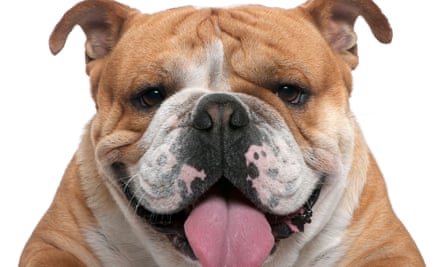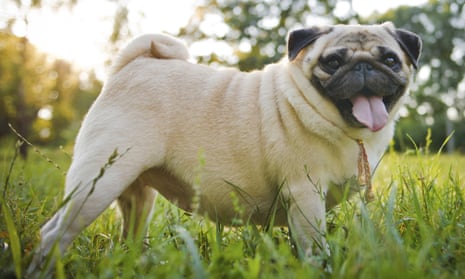I still remember when I was introduced to the concept of a “brachycephalic” (squashed-nosed) dog as a veterinary student. We were having our first anatomy lectures on the skull and the lecturer put up various slides (yes, slides – that’s how long ago I trained to be a vet) showing x-ray images of dogs’ heads. Various different-sized ones went up – a collie, a jack russell, a beagle and then suddenly an extraordinary image of a skull with a crushed nose and distended forehead. “What is wrong with this patient?” our lecturer asked. “Has it been hit by a car?” The students responded. “Has it been kicked? Is there a birth defect?” None of these was right, of course, because the lecturer had been waiting to give his punchline. “You are all wrong. It’s just a pug”.
And there you have it, brachycephalic dogs (which include pugs, bulldogs, French bulldogs and shih tzus) are an anatomical disaster. Every structure that should make up the nose has been squashed flat. The only time these dogs are not in some degree of respiratory distress is when you have them intubated under anaesthetic.
I have seen it myself: a bulldog comes in panting away with blue-tinged gums (normal for the breed), I anaesthetise it and put the tube in and as if by magic it pinks up and breathes normally – presumably its body is overjoyed to actually be receiving enough oxygen for once. Breathing aside, most of these animals also have other genetic abnormalities that result in illness, from back problems to eye issues.
This week, the British Veterinary Association’s (BVA) recommendation to think twice before buying one of these dogs hit the headlines and suddenly people are talking about the issue. But if you had asked any practising vet in the past few years what they thought of brachycephalics they would have been as critical of these breeds as I am.

In light of all this, the question has to be – why do vets not speak out more often? And therein lies the rub; the vast majority of us work in general practice and our income is based on mending people’s animals and getting paid for it, and, like it or not, a large number of those clients have brachycephalic dogs. In my practice alone we have a number of pug, shih tzu and bulldog breeders and dozens of owners with squashed-nosed pets.
If I stood up and told the truth about these breeds I would immediately alienate them and they would up sticks and move to the neighbouring practice where the vet was not as outspoken. Vets in general practice simply cannot afford to be honest and to speak out. You would be hard-pushed to find a general practitioner who likes the concept of a brachycephalic dog but you would be equally hard-pushed to find one being openly critical of them because this would put their livelihood on the line.
So I am delighted that the BVA has come out with its headline-grabbing advice – at last we can talk about the subject a bit more openly (although not openly enough for me to put my name to this column). My colleagues often debate the ethics of being in a profession that, despite its better judgment, helps to perpetuate these anatomical abominations – maybe it is time for us to take a stand.
